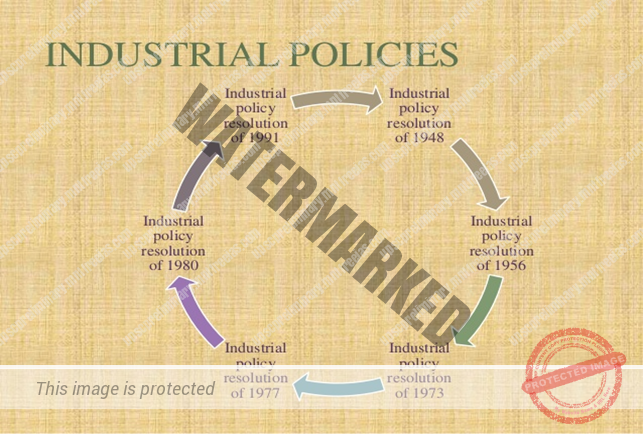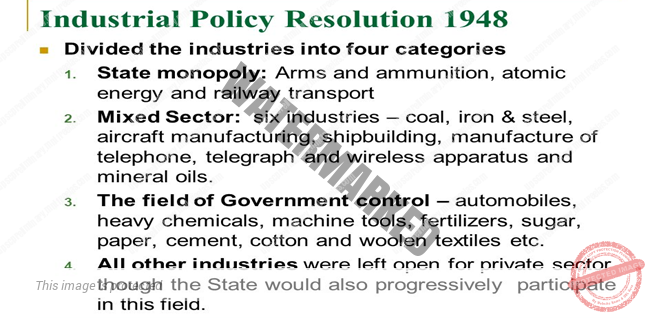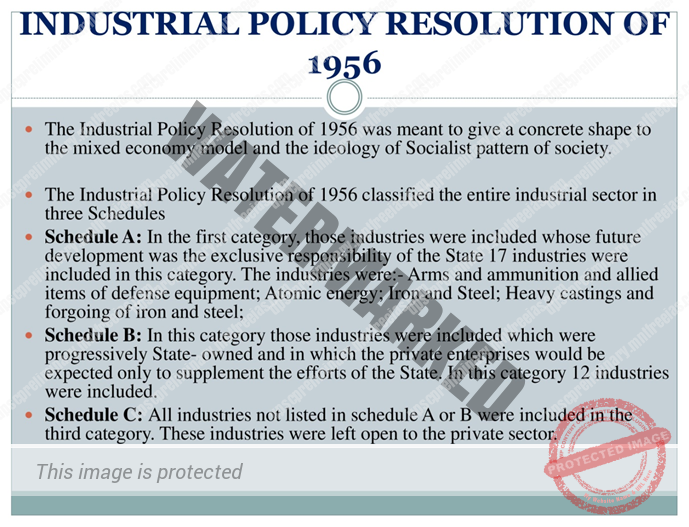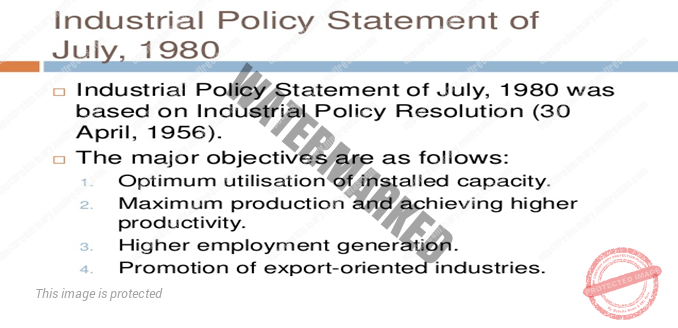- INDUSTRIAL POLICIES
- INDUSTRIAL POLICY RESOLUTION 1948, 1956 & 1990
UNIT 9 & 10 – INDUSTRY AND INFRASTRUCTURE – PART 3
INDUSTRIAL POLICIES
Important Industrial policies prior to 1991
India is the Asia’s third largest economy. The 70 years of Independence have brought a remarkable change in the socio – economic landscape of India.
Economic development of a country particularly depends on the process of industrialisation. At the time of Independence, India inherited a weak and shallow industrial base.
Therefore, during the post–Independence period, the Government of India took special emphasis on the development of a solid industrial base.
The Industrial Policy Resolutions of 1948 and 1956 clearly stated the need for developing both small-scale industries and large-scale industries.
Industrial Policy Resolutions 1948
The Government of India recognized the significant contribution of industrialization. Therefore, the Government of India declared its first Industrial Policy on 6th April 1948. The main importance of this policy was that
it ushered in India the system of mixed economy.
- Industries were classified into four groups such as public sector (strategic industries), public–cum –private Sector (key industries), and controlled private sector, private and co-operative sectors.
- This policy endeavoured to protect cottage and small-scale industries.
- The central and state governments had a virtual monopoly in rail roads
and exclusive rights to develop minerals, iron ore etc. - The Government encouraged the significance of foreign capital for
industrialization but the government decided that the control should
remain with Indian hands.
Industrial Policy Resolution 1956
- The Industrial Policy of 1956 sought to give a dominant role to public sector. At the same time, it assured a fair treatment to the private sector.
- The Government would support and encourage cottage and small scale
enterprises by restricting volume of production in the large-scale sector by differential taxation or by direct subsidies. - This industrial policy emphasized the necessity of reducing the regional
disparities in levels of development. - The Government recognized the need for foreign capital for progressive
Indianisation of foreign concerns.
Industrial Policy Resolution of 1980




